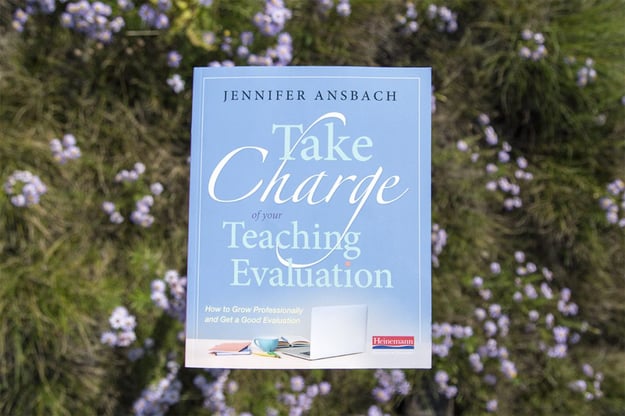Few people I've spoken with about evaluations seem to find new evaluation frameworks useful in improving their teaching or in providing useful coaching feedback. The question of “what does good teaching look like?” is not clearer to them because new evaluation models have been adopted, many defying statistical logic of validity (especially those that rely on “student achievement” as part of teacher scores). Those who created these frameworks are raking in record profits while school districts struggle under the increased burden of these evaluation tools. Those making the decisions seem to know little about how these tools work and assume the data generated is valid despite overwhelming evidence that it is not necessarily objective or valid data for decisions. Instead, there are several other ways to consider what good teaching looks like.
In 2002, researchers Dick Corbett and Bruce Wilson published an article about a study they did of 400 students in inner-city, low-income Philadelphia public schools. Those students, according to Corbett & Wilson, could identify teachers they thought were good teachers and could differentiate between teachers they liked and teachers that were strong teachers. Students could identify, for example, “’mean’ good teachers and ‘mean’ bad teachers; ‘funny’ good teachers and ‘funny’ bad teachers; and ‘boring’ good teachers and ‘boring’ bad teachers.” These students defined good teachers as those who made certain students completed their work, kept the classroom under control, helped students, explained assignments and material clearly, varied their routine, and knew their students and their students' circumstances. This is a lot like the list of what the National Board of Professional Teaching Standards defines as their Core Propositions.
One student said, "I want a teacher strict enough for me to learn.” As adults struggle to define what good teaching is, these students could articulate what they needed.
Danielson (2016) makes several policy recommendations, but perhaps most persuasive is her argument that because several studies put the percentage of teachers who are ineffective at 6% or less, the educational policy should focus on creating a culture of professional learning. Diane Ravitch argues for the same policy shift. A 2015 report by Accomplished California Teachers, all National Board certified, calls for including teachers in the design of evaluations, and relying on portfolios rather than just observations to determine what kind of instruction teachers are doing. Their recommendations also suggest observations should be connected to professional development, recognizing the expertise of accomplished teachers and offering peer-mentoring, lesson study projects, and more collaboration using a team approach to teacher development, a counterpoint to the studies that show the new system is decreasing collaboration. Perhaps most important, they suggest that an evaluation team or oversight body ensures "fairness, consistency, and reliability" in teacher evaluations, a common concern among teachers under the new evaluation systems. Many of the people I interviewed for this book referred to being observed as a "dog and pony show," believing it matters who comes to do the evaluation because inter-rater reliability is low.
An EdWeek article by Michael Schmoker (2012) argued that complex teacher evaluations don't work because "they lack clarity and focus," citing their length and "murky, agenda driven language" as cause for concern. He cites several experts that say morale and productivity increase when the criteria for employee evaluation is reduced to only a few clear ideas. Schmoker suggests observations focus on one or two elements, with teachers have several opportunities to make adjustments and receive feedback on their progress, with their progress and final performance becoming the basis of their evaluation.
Ultimately, the increased paperwork and measures to ensure “accountability” are costing American schools dearly. Not only have states and districts spent considerable sums of money on standardized tests and the costs of administering them, but they have also spent significant portions of their budget purchasing the licenses, software, and required training for their districts. The increased workload also leads to high turnover, as more teachers leave the profession. Teacher turnover hurts student achievement, and keeping experienced teachers in classrooms is one of the best ways to ensure student growth. For these reasons, we must speak up and advocate for ourselves. Speaking up for ourselves is speaking up for our students. The standardization of testing and instruction is hurting students, and as educators, we need to use our voices to protect our students and ourselves from systemic demoralization.
In the meantime, the ideas in this book offer a way of staying focused on our students to make the evaluation process as student-centered as possible. If we keep talking about what our students know and can do and what the next appropriate goal is, we can use the cycle of evaluation to help students learn.
• • •
To learn more about Take Charge of Your Teaching Evaluation and download a sample chapter, visit Heinemann.com.
 Jennifer Ansbach (@JenAnsbach) was told by nationally prominent educator, Jim Burke, “if you were any more reflective, you’d be a mirror.” A National Board Certified™ English teacher, Jen works in a continuous cycle of professional improvement: identifying students' needs, improving her practice, finding applicable PD, and documenting her work. She also supports other teachers’ professional journeys by serving on her local and district PD committees and as her local union’s PD chair. She hopes that Take Charge of Your Teacher Evaluation will help teachers overcome the feeling of powerlessness that evaluations create and finally be recognized for the effectiveness of their daily practice.
Jennifer Ansbach (@JenAnsbach) was told by nationally prominent educator, Jim Burke, “if you were any more reflective, you’d be a mirror.” A National Board Certified™ English teacher, Jen works in a continuous cycle of professional improvement: identifying students' needs, improving her practice, finding applicable PD, and documenting her work. She also supports other teachers’ professional journeys by serving on her local and district PD committees and as her local union’s PD chair. She hopes that Take Charge of Your Teacher Evaluation will help teachers overcome the feeling of powerlessness that evaluations create and finally be recognized for the effectiveness of their daily practice.



